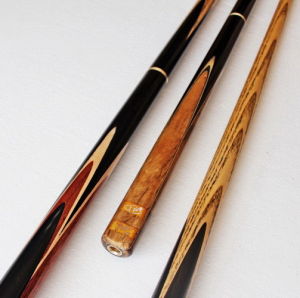
The pool table has been around since the beginning, even though no one knows the inventor. The earliest recorded records of the game date back as far as the 1500s in Northern Europe. It became very popular among men and women of all ages. It has remained very popular in the United States over many years.
The original game of pool was played on grass, or a board with holes in the middle. It was played on object balls that were numbered between one and fifteen. It was similar in nature to croquet except that the player would shove the ball rather then strike it. The "mace," a wooden stick used to strike the ball, was introduced in the 1600s.
The game was refined with the addition of a cue stick, a wooden hoop, and the balls. The game became extremely popular in Europe, and it spread to America. However, the game did not become popular until the Industrial Revolution.

While the history of the game isn't clear, it has been developed by many people. The indoor billiard table was first invented by King Louis XI, France. The game was also popular in England and became more popular after the Industrial Revolution. It was very popular with the French nobility.
After the game was introduced to the United States, it developed into a very popular sport in the 1840s. Many of the first settlers brought billiards to the United States. Tournaments were held across the country. The game was popularized in more luxurious saloons and because the equipment was expensive, it was not affordable to lower classes.
The game's past was further complicated by the introduction of ivory as a material for ball. Original ivory was made from elephant tusks. Although Ivory was more popular in 17th-century Europe, it was not indestructible. It also tends to crack when hit with too much force.
The 1920s saw the introduction of a new ball material that replaced ivory pool balls. This new ball material was made from a mixture of nitrocellulose and camphor, and it could explode when struck with extreme force.

This new ball material was called a composite ball. While the nitrocellulose didn't have great stability, it was a cheaper alternative to ivory. After a while, the stick and hoop were abandoned. A leather tip was added to the cue tip, which made it easier to hit balls.
The game developed over time and was popularized in the United States in the late 1800s. In the late 1870s, John Wesley Hyatt, a billiards player, invented a ball made of camphor and nitrocellulose. This ball material was unstable, and it could explode if hit with extreme force.
Another significant figure in the game's development was Michael Phelan, a successful pool player. Phelan, whose father immigrated from Ireland into the United States in 1883 and Michael followed him to the pool hall trade, was born in Ireland. Phelan eventually wrote a book called pool which inspired a new generation.